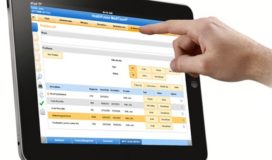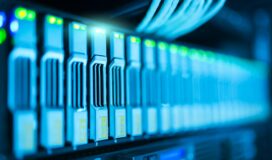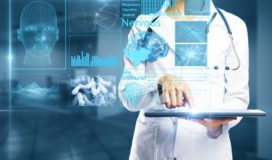
What is Health Information Technology (Health IT)
What is Health IT?
Health IT is basically information technology put into use for health and healthcare. It involves processing of health information of a patient by including both hardware and software components. Technology is used for storing, retrieving and sharing of the healthcare information of a patient. Applications are utilized to use this information for communication as well as for decision-making purposes.
Health IT refers to the use of electronic and digital technologies to manage, store, and exchange healthcare information. It encompasses a broad range of tools, from electronic health records (EHRs) and clinical decision support systems to mobile health applications and telehealth platforms.
What comes under Health Information Technology?
In one line it can be said that any type of technology which is utilized to manage the usage of health-related information between patients, doctors, hospitals as well as government and the insurers comes under the hood of Health Information Technology or Health IT.
The goal of Health IT
The goal of health IT is to improve the quality of healthcare services, increase efficiency, and reduce costs by providing healthcare providers with timely access to accurate patient data. It also enables patients to become more engaged in their healthcare by giving them access to their own health information and enabling them to communicate with their healthcare providers remotely.
The benefits of Health IT
There are several benefits of relying on IT in healthcare, including:
- Improved patient care: health information technology enables healthcare providers to access complete and accurate patient information at the point of care, improving clinical decision-making and reducing errors. It also facilitates communication between providers and patients, leading to better care coordination and patient engagement.
- Increased efficiency: Health IT streamlines administrative processes, such as scheduling appointments and billing, which can improve efficiency and reduce costs. It also automates many routine tasks, freeing up healthcare providers to focus on patient care.
- Better population health management: Health IT can be used to track and monitor patient data, which can help identify trends and risk factors in a population. This information can then be used to develop targeted interventions and improve population health outcomes.
- Improved public health surveillance: Health IT can be used to monitor and track infectious diseases, outbreaks, and other public health threats, allowing for a rapid response and reducing the spread of disease.
- Cost savings: health information technology can reduce healthcare costs by eliminating redundant or unnecessary tests and procedures, reducing medical errors, and improving overall efficiency.
Overall, health IT has the potential to transform healthcare delivery by improving patient outcomes, increasing efficiency, and reducing costs.
Basic Inclusions in Health Information Technology
Electronic Health Records (EHRs)
Doctors before Health IT were required to maintain record of information related to a patient’s health on a piece of paper. But with Health Information Technology the storage shifted from paper records to digital media known as EHRs or Electronic Medical Records (EMRs).
EHRs are used by doctors to keep a check on your health related information and sharing the same, as and when required with specialists.
Personal Health Records (PHRs)
PHRs are used by patients for inputting information ranging from doctor visits to even your health goals, calorie intake, exercise schedule and blood pressure.
PHRs can be created and maintained by patients themselves, or they can be created through a healthcare provider or health plan. Patients can access and update their PHRs from anywhere, using a computer or a mobile device.
PHRs can help patients become more engaged in their own healthcare by giving them access to their own health information, enabling them to track their progress, and allowing them to communicate more effectively with their healthcare providers.
E-Prescription
Through E-Prescription a direct communication is made between the doctors and the pharmacists. Under this, a patient is not required to carry prescription papers with him/her for getting medicine from the pharmacy or any other medical store.
Personal Health Tools
As clear from the name these are the tools designed for a person to take care of their health in an effective way. For example, various smartphone applications are present related to health and fitness to serve as an assistant for enabling a person to meet his/ her set fitness goals.
Clinical Decision Support Tools
These tools play a significant role in a clinician’s decision-making process of the health of a patient. Guidelines based on proof are present in these tools which help a clinician to make proper recommendations on the person’s health.
Computerized Physician Order Entry or Computerized Provider Order Entry (CPOE)
A significant number of cases exist in which a patient suffered due to medication as well as prescription errors made by the hospitals. In such case, CPOE is meant to reduce these kinds of errors. This is accomplished by electronic prescriptions along with a bar code system developed to dispense drugs.
However, usage of CPOE is not widespread due to interoperability concerns with the existing bar coding systems. Apart from that, a significant change is needed in the current practices by a vast chunk of small-time physicians along with extra time for adoption of this technology.
Diseases Registry
A disease registry is a database that collects and maintains information about individuals who have been diagnosed with a particular disease or condition. Disease registries can be used to track the prevalence and incidence of a disease, monitor disease outcomes, and evaluate the effectiveness of interventions and treatments.
Disease registries can be created at the local, regional, or national level, and they can be managed by healthcare providers, government agencies, or other organizations. The information collected in disease registries can include demographic data, clinical information, laboratory test results, and treatment information.
Disease registries can be particularly useful for rare diseases, where information about the disease and its treatment may be limited. By collecting and sharing information about patients with rare diseases, disease registries can help improve diagnosis, treatment, and research for these conditions.
E-Mail Communications & Web-Based Patient Portals
These are used to facilitate interactions between a doctor and a patient through secure channels. A patient can get access to his/her specific medical records.
Health Information Exchange Tools
Health information exchange tools enable hospitals to share a patient’s health information between different systems in the same hospital, or between two different hospitals in a region or between hospitals and the government or insurers.
The benefits of HIE tools include improved care coordination, reduced medical errors, increased efficiency, and improved patient outcomes. For example, if a patient visits an emergency department while away from home, the healthcare provider can access their medical records electronically through an HIE tool, ensuring that they have access to complete and accurate information about the patient’s medical history, medications, and allergies.
HIE tools can also be used to support public health surveillance efforts by collecting and aggregating health data at the population level. This can help public health officials to identify and respond to disease outbreaks, monitor disease trends, and evaluate the effectiveness of interventions.
Summary: How Health IT Helps
All the above-mentioned tools and many others have been assigned a dual responsibility towards the health of a patient. Firstly, it eases the burden on the physicians and secondly, it provides responsible healthcare facilities to the patient by placing him/her at the center stage of healthcare.
Though challenges do exist in every field but health information technology is rapidly integrating itself into the current healthcare systems all over the globe.
Health IT



